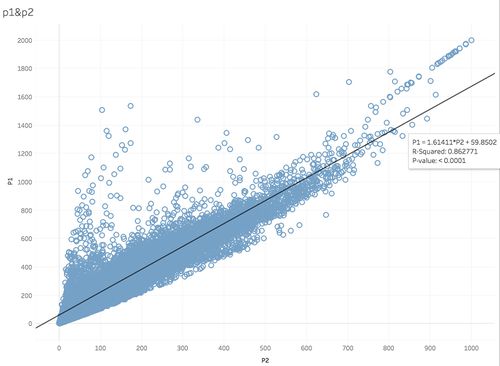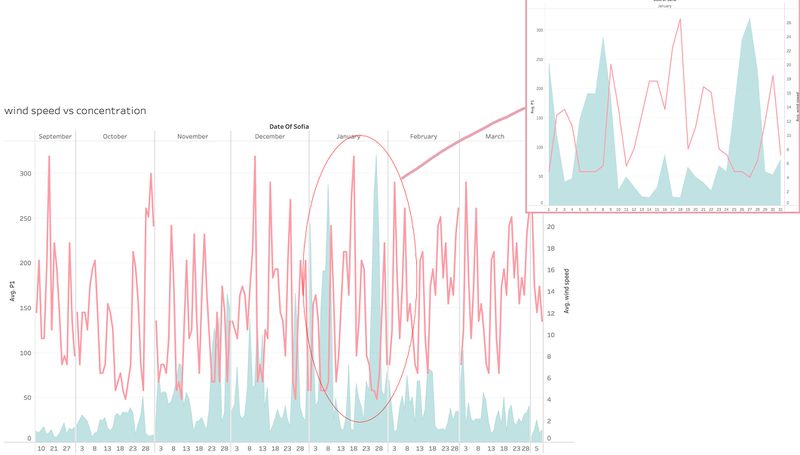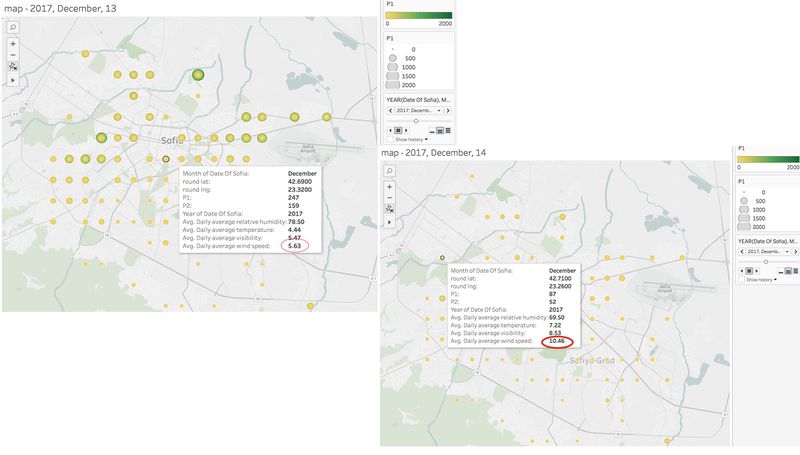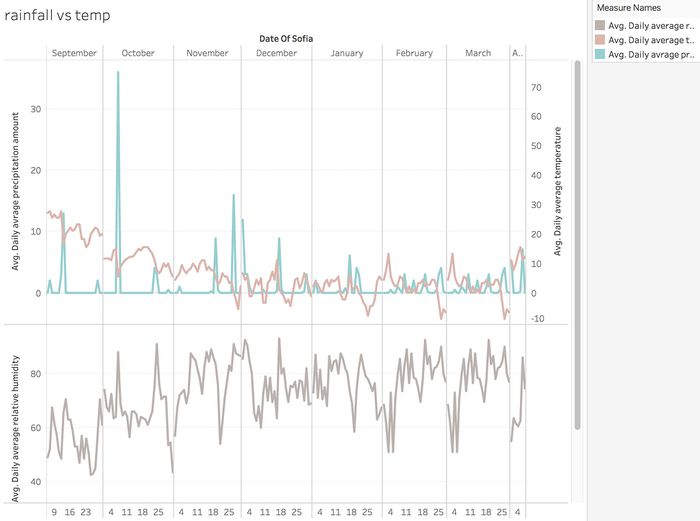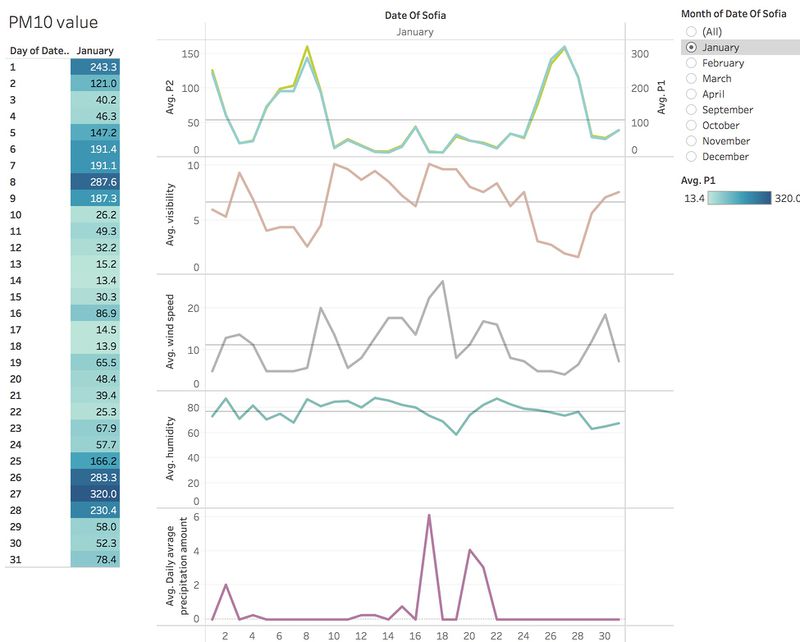ISSS608 2018-19 T1 Assign Chen Jingyi Task 3
|
|
|
|
|
|
Contents
Discover relationships
In this task we join 'Meteorological measurements' with 'Citizen science air quality data' to explore hidden relationships behind indicators.
PM10 & PM2.5
From taks2 we already know that PM 10 and PM 2.5 follows the same trend over time, here we furthur explore the linear relationship of these 2 variables, and the result is shown below. The p-value and R squared value indicates that the model is able to explain the majority of observations, which means these measurements are highly related with each other. In later analysis, we will only use PM10 value to examine its relationship with other variables since we can consider same result can be got if use PM2.5 instead.
Wind is really helpful
The graph below shows that wind is very useful at reducing concentration value: these 2 values have a reverse trend, when wind is low, concentration is usually high. This is especially significant in month with higher PM10 records, for example January.
The picture below represents the significant effect of wind in reducing PM level. We take records from 2 consecutive days, with huge gap in average wind speed. The day with stronger winds has a much lower level of both PM10 and PM2.5 value. We can also discover that the wind works better in plains rather than regions with high mountains, since the lower-left corner has a higher altitude than the other side, but change in air quality is more obvious in the Upper-right area.
Rainfall vs Temperature
When there's huge rainfall, the temperature will definitely drop, sometimes with a slight lagging.
Combining together
Put all these measurements in dashboard provides us with a clearer view.View dashboard here. Although the rainfall amount has many missing values, but when there's records of precipitation values, the P1 value is reduced accordingly. Apart from wind, rain is also a good natural helper in improving air quality.

